We should be grateful to Philippe Kahn, credited with inventing the camera-phone, back in 1997. (Or not, according to C-Net.) Whomever the mastermind, he (or she!) ensured we could have a camera, all the time and everywhere. So as we walked briskly past this fence near Woodbine Park one evening this May, I could follow up my double-take with the shot below.
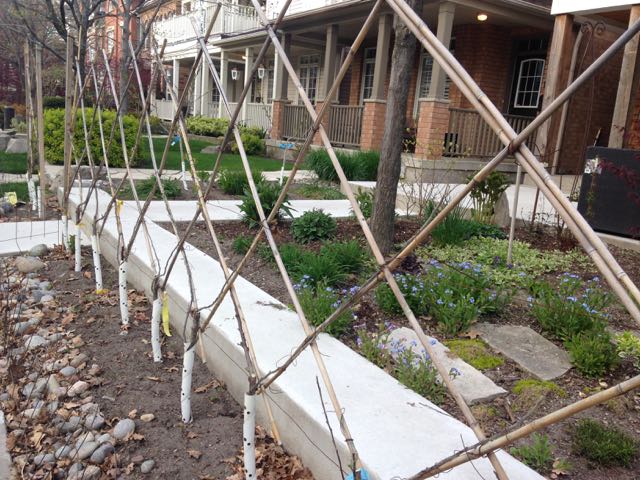
This kind of sighting always sends me into a mad flurry of research. Here’s what I found out.
A Belgian fence is a lattice-pattern espalier – tree(s) or shrub(s) pruned and trained to grow flat. Often, they’re fruit trees/shrubs, allowing you to create your own little orchard in a small space.
Usually, they’re trained on supports against a wall or fence. But a Belgian fence, with time, can be free-standing. The crossing branches can fuse together, either by nicking the bark where they cross or sometimes on their own. The structure gets quite solid with maturity. Literally, a fence.
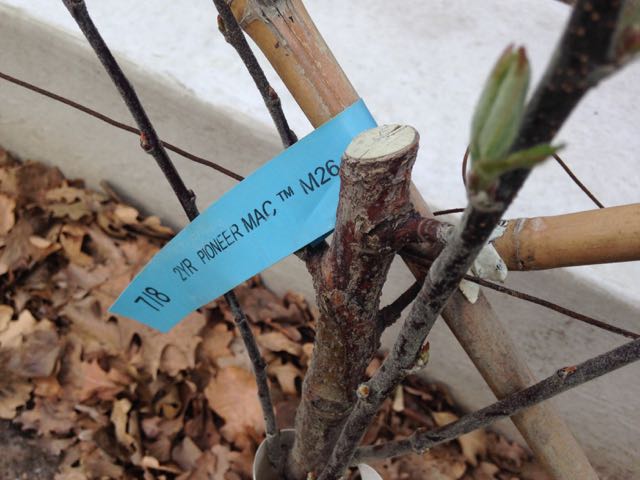
Scroll back for a second to the previous picture. See the little Y-shaped branches at the bottom of the bamboo framework? A closer look revealed these to be apples. This construction is ideal for apples, because it lets you grow different varieties and cultivars close together. Most apples aren’t self-pollinating, and even those that are fruit more heavily if pollinated by a different variety.
Of course, to do so, both varieties need to flower at the same time. This link to a PDF of compatible apples for cross-pollination is a who’s who, or rather who’s when, of apple blossom times.
The Belgian fence at the top is a few years further along. It’s in the Minnesota Landscape Arboretum, which isn’t surprising when you learn how apple-y Minnesota is. The University of Minnesota has been breeding cold-hardy apples for years, including the wonderful ‘Honeycrisp‘.
Ontario has its own apple, the ubiquitous ‘McIntosh‘ (Not Macintosh. That’s another kind of Apple.), which is also a parent of many popular varieties (e.g. ‘Spartan’ and ‘Empire’). The ‘Pioneer Mac’ in the Belgian fence in the Beach seems to produce smaller, sweeter fruit than the parent.
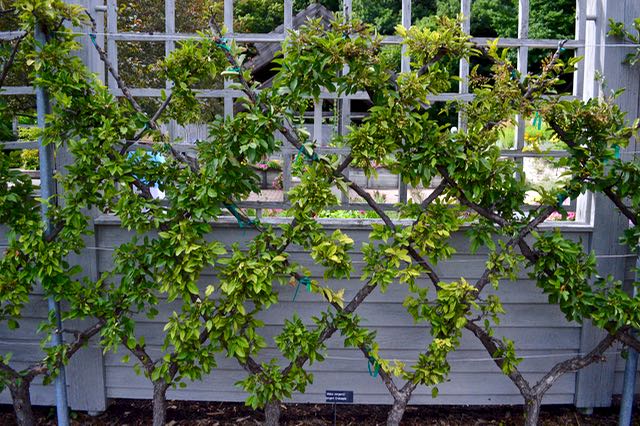
We saw a good example of another type of espalier in the Latham garden you might have looked at in an earlier post. (Look at the right of the third picture, behind the gazebo.) Here it is below.
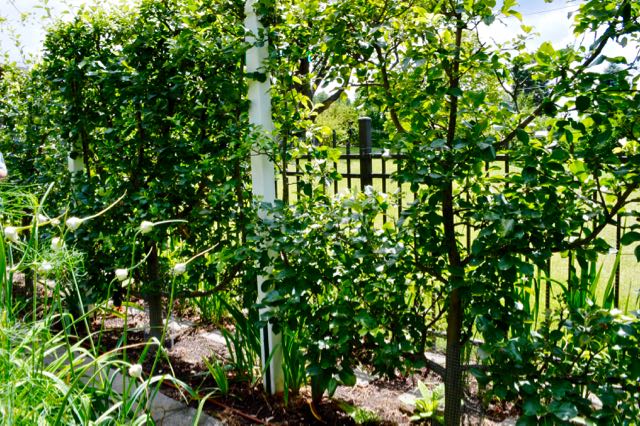
The Belgian fence and candelabra are two of many espalier forms, and this article in Fine Gardening by espalier expert Peter Thevenot is an excellent overview. If you’re interested in making your own Belgian fence, this website shares Thevenot’s simple step-by-step how-to. And you’ll find a more scholarly article by Lee Reich in this PDF from the Arnold Arboretum. And here’s a useful video that explains ongoing pruning.
I love the idea that something so exotic to look at is actually an extremely practical way for small-space gardeners to grow fruit. It makes me turn my eye towards our south-facing front wall, wondering if it’s time to haul down the spiky Pyracantha and consider something edible. It doesn’t have to be an apple. Even red currants can be espaliered. Hmmmmm…
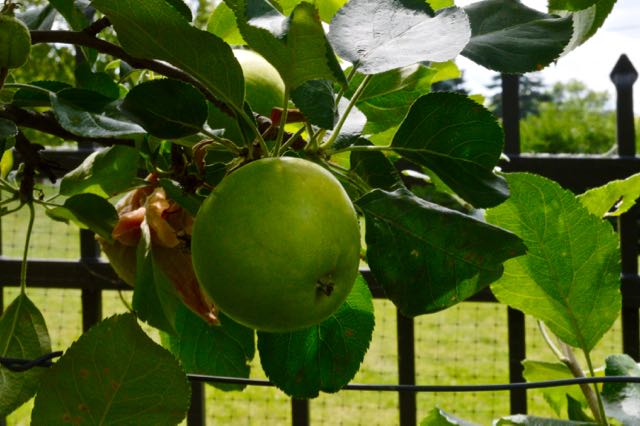

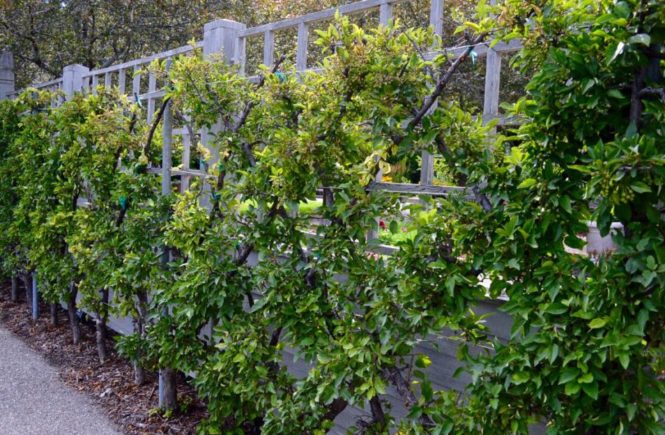

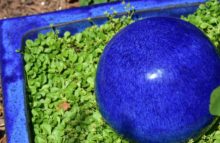

6 comments
Love this post. I didn’t know you could nick them at joints to fuse them together. I may have to try that.
Jim, if you take on a project like this, I’m sure we’ll all want to read about it. It will be the Charlier Shed of espaliers!
I love Belgian fences – they look attractive in every season. I have them on my list to talk about for my Great Green Wall Hunt series as an option people may not realise could be considered as a green wall.
They’re beautiful, aren’t they?
Fence perfection! For those with patience.
I agree that setting it all up takes time, but I was surprised to read how quickly the fence would grow in and start producing (though I’ll need to re-read my own links to remember the details). I guess that any fruit tree takes a few years to get going to full productivity. But, if I recall, espaliering might actually speed up production slightly.